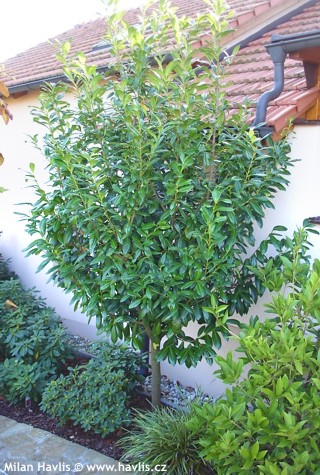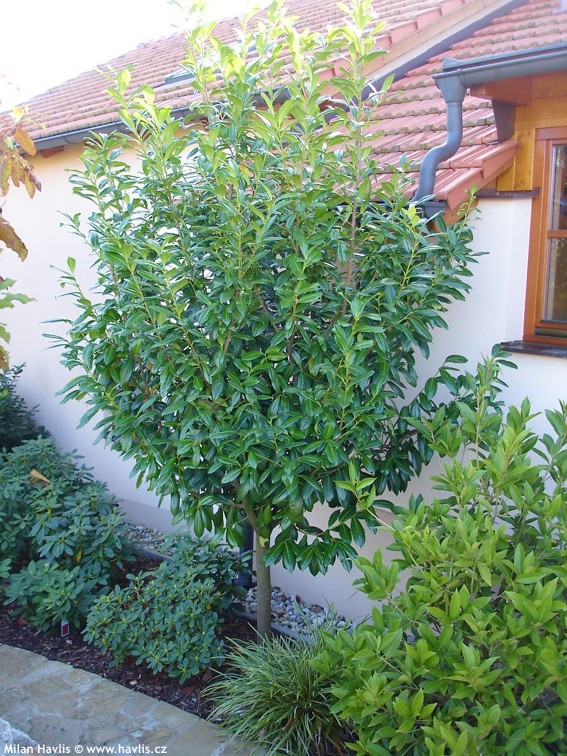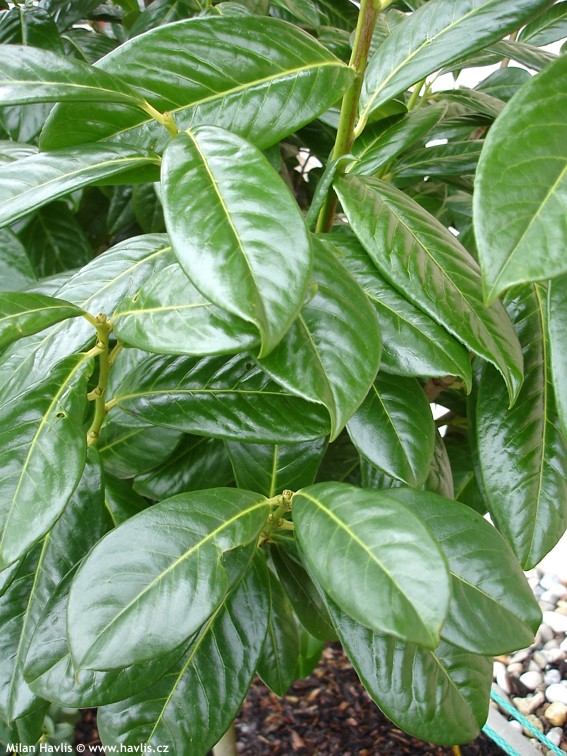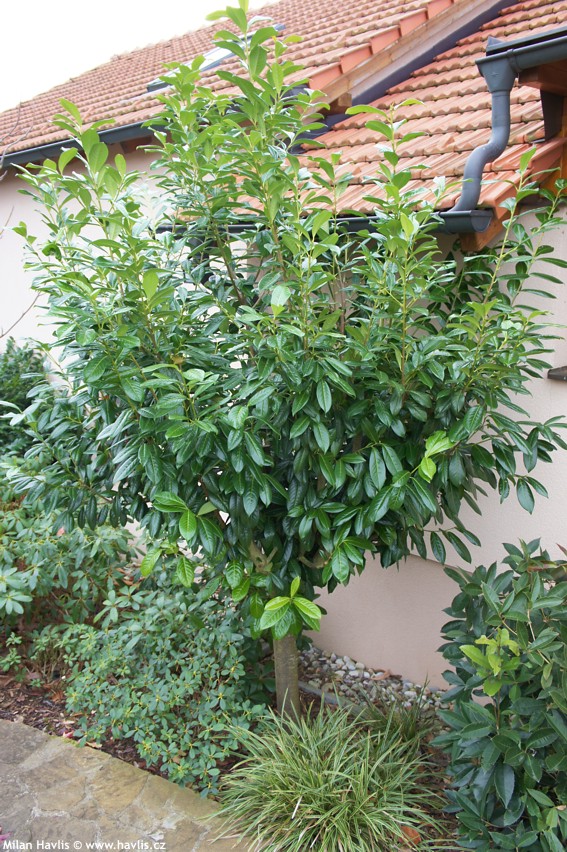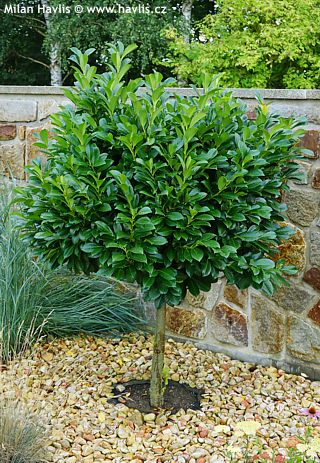Prunus laurocerasus 'NOVITA' cherry laurel - STANDARD TREE
Prunus
We are specialists in evergreen plants and we offer the widest possible range of quality plants. English (cherry) laurel is probably the most common and reliable species.
Novita is a new sensation among cherry laurels. Eventually there is a hardy variety which has benefits of the formerly more tender ones: it grows fast and big, has large leaves of a nice colour, and is surprisingly hardy for a large-leaved cherry laurel. It is a selection of Rotundifolia variety hence the resemblance. Evergreen leaves are 10-15 cm long, obovate, very glossy, soft green when young turning to deep green.
It is a perfect specimen or a superb hedging plant. If grown as a standard tree it quickly forms a dense and substantial crown that will block the window views from surrounding houses, or provide an excellent evergreen tree for the front yard. It seldom flowers when young. Older and well-established plants, however, flower profusely if unpruned and make large black berries. There have been tests carried out (source: Plants For A Future) that proved that only leaves and seeds from unripe fruit can be dangerous, and that dark-coloured and ripe fruit in limited quantity is harmless even for children.
Novita grows fast and can be pruned in April or in mid July. Laurels need deep and fertile, acid, moist but well-drained soil, and extra watering in frost-free periods of winter to prevent from drying out before the ground gets frozen. It will thrive in full sun or part shade, and will also tolerate being grown in full shade where it partly loses its shape. It seldom suffers from chlorosis (leaves turning yellow owing to lack of iron in the soil) but when it does use a special liquid soil pH balancer to increase soil acidity which will help the plant absorb iron from the ground. It is very hardy to about -24°C and has withstood spells of -27°C (USDA zone 5b).
Last update 31-01-2018

3 612,5 Kè

3 901,5 Kè

3 901,5 Kè

6 120 Kè
Goods are shipped all over Europe. For Russia and U.K. and for further details please read about SHIPPING OPTIONS HERE.
Are you interested in a serious discount for orders NOV-FEB? Check your options here.
THE PRICES INCLUDE VAT of 15%. For quick conversion you can use 1 CZK = approx. 0.04 EUR
- STANDARD QUALITY - Plants of this group are 1st class quality with number of branches and overall density adequate to their size and age, considering they were container grown.
- DE LUXE QUALITY - This label guarantees a luxurious quality of manually selected plants that, compared to their height and age, are exceptionally dense and beautiful.
- EXTRA - These plants are usually mature and bigger specimens with exceptional overall appearance.
- STANDARD (as described in the plant form) means a tree with a trunk of 190-210 cm and a crown at the top, unless specified differently. The commercial size for trees is their girth measured in the height of 1m from ground.
- HOBBY - These plants are of the same quality as our standard-quality plants but younger and therefore cheaper.
- SHRUB - a woody plant with branches growing bushy from the ground level.
- HALF-STANDARD or MINI-STANDARD - a small tree with shorter trunk, its size is usually specified.
- FEATHERED - These are trees with branches growing already from the base of the trunk and up along the stem.
- GRASSES and PERENNIALS - Sizes given usually read the diameter of the pot or the clump, as specified.

































